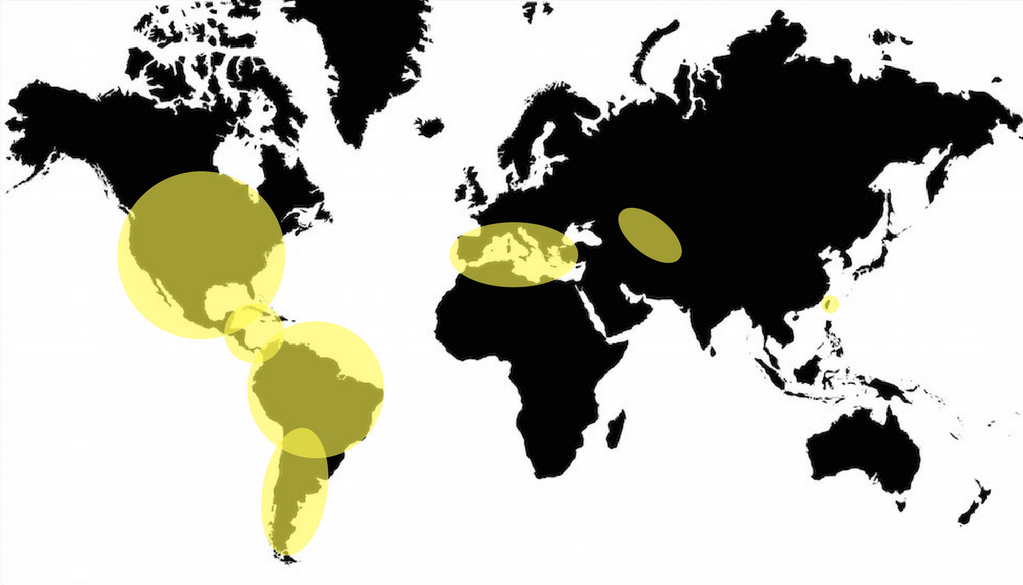| Line 1: | Line 1: | ||
{{Aix-Marseille}} | {{Aix-Marseille}} | ||
| − | <h1> | + | <h1>KILL XYLL</h1> |
[[File:T--Aix-Marseille--Xylellaworld.png]] | [[File:T--Aix-Marseille--Xylellaworld.png]] | ||
| − | == | + | ==Abstract== |
| − | + | Kill Xyl is a cure against the disease caused by ''Xylella fastidiosa'', a plant pathogene. Actually, no extensive cure exist against this disease that causes the loss of thousands of hectares of European crops. | |
| − | + | Kill Xyl has the goal to detect the symptom of the disease, then use specific phage-likes particles in order to inject toxins into ''X. fastidiosa''. Finally, with the help of fatty acid it quench the quorum sensing activity of the bacterium and with an enzyme it degrade the biofilm, which is the principal cause of plants death. | |
| − | + | To be specific to ''X. fastidiosa'', Kill Xyl use a specific phage like particle able to recognized the pili and some extracellular protein by which the bacterium can be identified in a background of millions. | |
| − | + | ||
| − | + | ||
| − | + | ||
| − | + | ||
| − | + | ||
| − | + | ||
| − | + | ||
==Using phages against Xylella fastidiosa== | ==Using phages against Xylella fastidiosa== | ||
Revision as of 12:59, 16 August 2017
{{{title}}}
Contents
KILL XYLL
Abstract
Kill Xyl is a cure against the disease caused by Xylella fastidiosa, a plant pathogene. Actually, no extensive cure exist against this disease that causes the loss of thousands of hectares of European crops. Kill Xyl has the goal to detect the symptom of the disease, then use specific phage-likes particles in order to inject toxins into X. fastidiosa. Finally, with the help of fatty acid it quench the quorum sensing activity of the bacterium and with an enzyme it degrade the biofilm, which is the principal cause of plants death. To be specific to X. fastidiosa, Kill Xyl use a specific phage like particle able to recognized the pili and some extracellular protein by which the bacterium can be identified in a background of millions.
Using phages against Xylella fastidiosa
An electron micrograph of bacteriophages attached to a bacterium, from Graham Beards
Xylella fastidiosa is currently causing an epidemic that lacks any effective management strategy. One solution consistent with the objective of iGEM is to engineer a phage both specific and lethal to the bacterium, but without posing any harmful effects to associated beneficial microflora.
Bacteriophages are a class of extremely specific viruses that infect bacteria and lack the ability to infect more complex organisms such as mammals. This approach to the problem seems very promising.
So what is the purpose of our group ? We aim is to create phage-like particles that will be efficient and non-replicative but kill X. fastidiosa. This will give us a safe and biological treatment able to cure the disease caused by the bacteria in over 100 species of plant including olive trees and grape vines. This will reduce the economic consequences for producers, while maintaining the high quality of their products.
A Quorum sensing approach
Quorum sensing is a method of communication between bacteria. It is used to coordinate their behaviour. X. fastidiosa uses this communication to biofilm production and virulence. We will turn the communication against the bacterium. By interfering with the communication using biological products we will inhibit biofilm formation. Some of these products can even kill the bacteria.
Biofilms are an important cause of mortality, as the xylem provides nutrients for the tree, but they are also important for the spread of the disease. We hope by using this approach to make X. fastidiosa less virulent and less infectious. Providing a curative and preventative solution.
Description
Tell us about your project, describe what moves you and why this is something important for your team.
What should this page contain?
- A clear and concise description of your project.
- A detailed explanation of why your team chose to work on this particular project.
- References and sources to document your research.
- Use illustrations and other visual resources to explain your project.
Advice on writing your Project Description
We encourage you to put up a lot of information and content on your wiki, but we also encourage you to include summaries as much as possible. If you think of the sections in your project description as the sections in a publication, you should try to be consist, accurate and unambiguous in your achievements.
Judges like to read your wiki and know exactly what you have achieved. This is how you should think about these sections; from the point of view of the judge evaluating you at the end of the year.
References
iGEM teams are encouraged to record references you use during the course of your research. They should be posted somewhere on your wiki so that judges and other visitors can see how you thought about your project and what works inspired you.
Inspiration
See how other teams have described and presented their projects:


